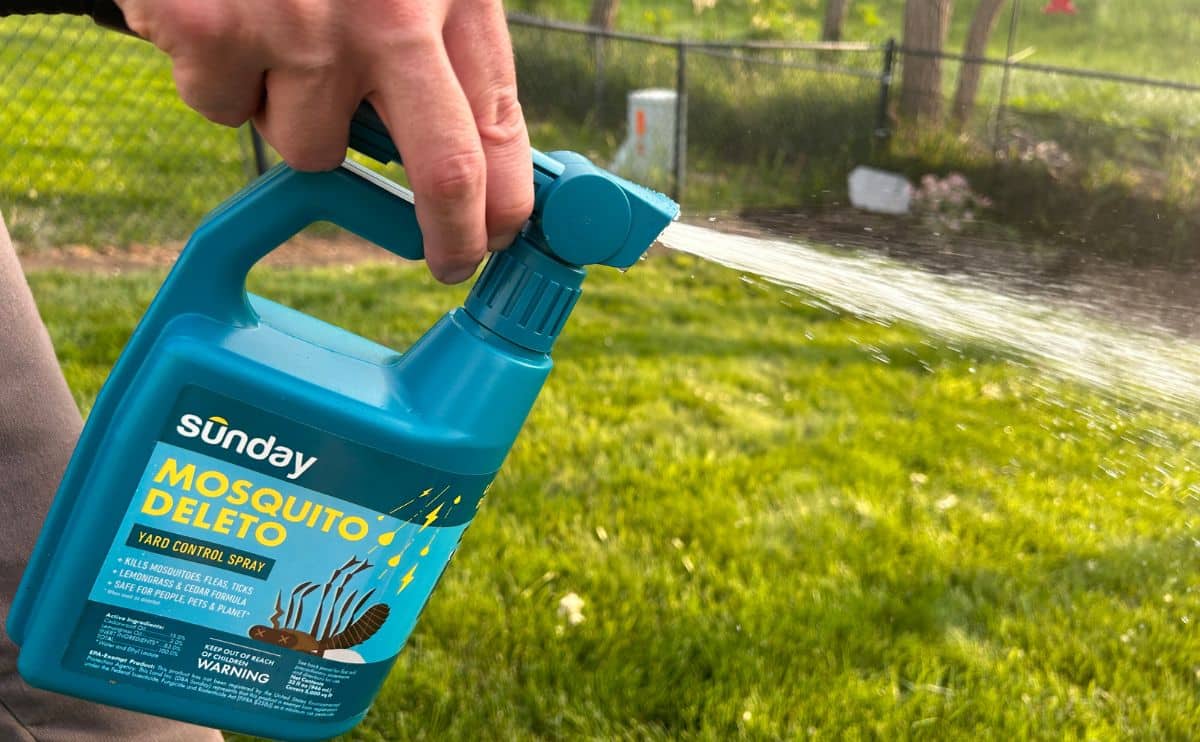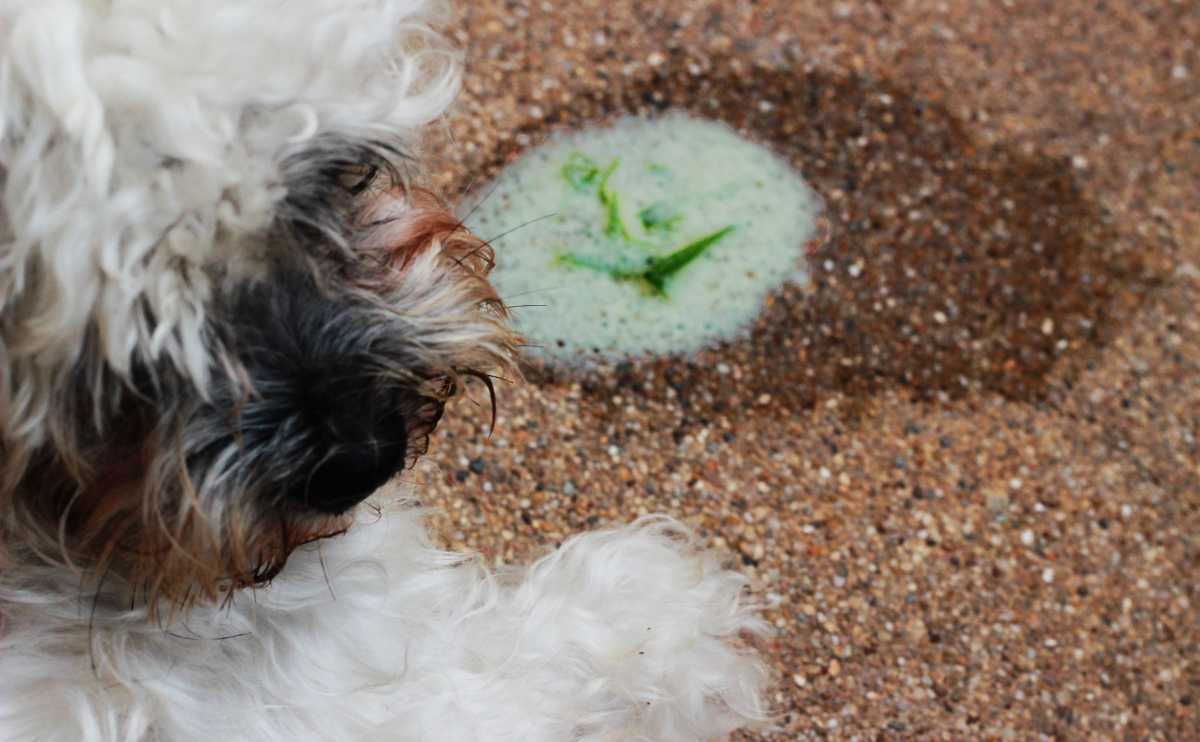Heartworms Almost Killed My Dog – Here’s What Every Pet Owner Should Know
When you purchase through links on our site, we may earn a commission. Here’s how it works.
It started with a cough. Just a little one, barely noticeable. But that small sound turned into something life-threatening. And some parents learn the hard way that heartworms aren’t just a “maybe someday” risk, they’re a right now danger.
Table of Contents
If you’re a dog parent (like me), you probably think you’re doing everything right. Monthly meds? Check. Regular checkups? Check. But here’s the shocker: even dogs on preventatives can get infected.
In this guide, you’ll learn how to spot the subtle symptoms of heartworm disease before it’s too late, what treatments actually work, and the smart prevention strategies that could save your dog’s life. Whether you’re a first-time dog owner or a seasoned pup pro, there’s a lot you need to know, because this isn’t just about parasites, it’s about protecting your best friend. So, scroll on because your dog’s health could depend on it.

What Is Heartworm Disease In Dogs?
Let’s break it down simply. Heartworm disease is precisely what it sounds like: worms living in your dog’s heart. Not just one. I’m talking up to 250 spaghetti-like parasites, growing as long as 12 inches, clogging up the heart, lungs, and blood vessels. And they can live up to seven years. Scary, right?
It’s caused by a parasite called Dirofilaria immitis, and it spreads through mosquito bites. That means even indoor dogs aren’t completely safe. And once infected, it takes six months before symptoms even show, giving the worms plenty of time to do serious damage.
Why should you care? Because left untreated, heartworm disease can lead to lung disease, organ failure, and yes, even death. The American Heartworm Society (AHS) and veterinary professionals stress the importance of early detection and prevention to avoid irreversible harm.
So, whether your pup is a couch potato or an outdoor adventurer, this disease doesn’t discriminate. Every dog is at risk unless you stay informed and take action.
Up next, how a single mosquito bite can turn into a full-blown heartworm infection and what you can do to stop it.

How Do Dogs Get Heartworms?
Here’s the not-so-fun fact: all it takes is one mosquito. That’s right, just a single bite from an infected mosquito can set off a chain reaction that ends with your dog fighting for their life.
Here’s the science in plain English. When a mosquito bites an animal already carrying heartworm larvae (called microfilariae), it picks up those tiny parasites. Then, when that same mosquito bites your dog, it injects the larvae into their bloodstream. Now, your dog is a host.
Over the next six months, those microscopic worms grow. And grow. And grow. Until they’re full-sized adult heartworms, living in the heart, lungs, and arteries, wreaking havoc silently.
Not only are mosquitoes tiny, but there is also no way to tell if a mosquito is infected with heartworm larvae. This is why preventing heartworms is critical. The kicker? You won’t even see symptoms until it’s already serious.
That’s why leading experts like the AHS and the American Veterinary Medical Association (AVMA) recommend year-round prevention and annual testing, no matter where you live. And yes, this includes dogs in colder climates. Mosquitoes are sneaky. They can survive indoors and even pop up during off-seasons. So don’t assume your zip code gives you a free pass.
Can Heartworm Disease Be Fatal? Here’s The Honest Answer
Let’s not sugarcoat it. Yes, heartworm disease can be fatal if left untreated.
This isn’t one of those conditions that clears up on its own or can be managed casually. Once adult heartworms take hold in your dog’s heart, lungs, and arteries, they start doing damage. And the longer they’re in there, the worse that damage gets.
Here’s what can happen:
- The worms physically block blood flow and oxygen circulation.
- The heart has to work overtime, which can lead to heart failure.
- Dead or dying worms can cause blood clots in the lungs.
- If untreated, the damage can spread to the liver and kidneys, increasing the risk of multi-organ failure.
Scary stuff, right? But here’s the flip side: when caught early and treated properly, heartworm disease is almost always survivable. Early intervention is key, and it could be the difference between a rough patch and a heartbreaking loss.
The Bottom Line? Yes, it’s serious. Yes, it can be fatal. But with the right care, it doesn’t have to be.
Up next: What you need to know about where and when heartworm risk is highest – it’s not just a warm-weather problem anymore.
Heartworm Risk By Region & Season: It’s Not Just A Southern Problem
Think heartworms are only a worry in the hot, humid South? Think again.
While it’s true that mosquito-heavy states like Texas, Florida, and Louisiana see the highest infection rates, heartworm disease has been diagnosed in all 50 states. And with changing weather patterns and more pets traveling with their owners, the map is shifting.

Where Risk Is Highest
According to the AHS’s heartworm incidence map:
- The Southeast U.S. remains a hot zone due to long mosquito seasons and mild winters.
- Urban areas with poor drainage and lots of standing water are high-risk, even in cooler states.
- States like California, Illinois, and even Michigan are seeing increasing case numbers each year.
Bottom Line? If your region has mosquitoes (every region does), your dog is at risk.
When Is Heartworm Season?
Traditionally, peak risk runs from late spring to early fall, but that window’s expanding. Mosquitoes are active year-round in some regions, especially in the South and along coastal areas.
That’s why year-round prevention is the new standard. Skipping “just a few months” in the winter can leave your dog vulnerable, especially if a stray mosquito slips into your home or bites during a warm spell.
Want to know what signs to watch for before it gets dangerous? That’s coming up next.
Early & Advanced Signs Of Heartworm In Dogs
Here’s the frustrating part: heartworm disease is sneaky. In the early stages, most dogs show zero symptoms. They’re running, playing, and eating like champs, all while these worms are quietly invading their heart and lungs.
But once the symptoms show up, they hit hard.
Early Warning Signs (Don’t Ignore These):
- Occasional mild cough
- Lethargy after exercise
- Slight loss of appetite
- Unexplained weight loss
You might shrug these off as “just tired” or “having a lazy day.” That’s the trap.
Advanced Symptoms (Red Flags You Can’t Miss):
- Persistent, dry coughing
- Labored breathing
- Fatigue after minimal activity
- Swollen belly from fluid buildup
- Pale gums
- Fainting or collapse (especially after activity)
- Abnormal lung sounds
At this point, it’s an emergency. These are signs that adult heartworms are clogging major arteries and stressing your dog’s heart. Left untreated, it can lead to heart failure or worse.
Veterinarians stress that annual heartworm testing is essential, even if your dog is on a preventative. Why? Because early detection equals better outcomes.
In the next section, I’ll look at exactly how heartworms are diagnosed and what to expect at the vet’s office.
Diagnosing Heartworm Disease: What To Expect At The Vet
So, your dog has been a little off lately, or maybe you just want to be sure you’re ahead of the game. Either way, getting tested for heartworms is one of the smartest moves you can make as a pet parent.
Here’s how it works:

Step 1: Diagnosis
Your vet will draw a small blood sample to look for heartworm antigens, which are proteins released by adult female heartworms. This is the most common and reliable test used today. It is quick, painless, and usually done in-house within minutes.
If the result is positive, your vet might order:
- A microfilariae test (to see if baby worms are in the bloodstream)
- X-rays or ultrasound to assess heart and lung damage
- Possibly more bloodwork to check organ function before starting treatment
It might sound intense, but it’s all about getting a clear picture before diving into treatment. This is serious stuff, and treating blindly can do more harm than good. Have a detailed discussion with your veterinarian around the time of diagnosis and bring lots of questions.
Step 2: Treatment
Okay, so your pup tested positive for heartworms, but now what? Here’s what to expect:
Melarsomine Injections: The Main Event
Treatment centers around melarsomine, also known as Immiticide, an arsenic-based medication injected deep into your dog’s back muscles. It’s powerful stuff, designed to kill adult heartworms. Vets typically follow a 3-injection protocol: one dose, then two more a month later, spaced 24 hours apart.
Supporting Meds That Make A Big Difference
- Doxycycline: An antibiotic that kills bacteria linked to heartworms and helps reduce lung inflammation.
- Prednisone: A corticosteroid that may be used to calm inflammation and prevent blood clots during treatment.
- Pain meds: Melarsomine isn’t exactly comfortable, so your vet may prescribe something to ease soreness post-injection.
The FDA requires a prescription for heartworm medication. Vets usually require a heartworm test to get a prescription, since there is a potential danger for dogs taking the drug if they already have the disease.
Once you get a prescription, consider ordering medication online to save your next trip to the vet or pet store. Some may even reimburse a portion of the cost of treatment should your pet contract heartworms while on medication purchased from them.
Unfortunately, sometimes a dog can still be infected with heartworms while taking preventative medicine. Research shows that this mainly occurs because the parasite can build up an immunity to the drugs commonly used in its region. It can also happen if you do not administer the preventative care appropriately and in a timely manner.
Step 3: Follow-Up Testing
Once treatment is complete, your dog will need a follow-up test to ensure all the heartworms are truly gone and the infection has been cleared. With the right care and close monitoring, dogs can recover fully. The key is early detection, working with your vet, and sticking to the plan.
How Pet Insurance Can Help
Heartworm treatment can be expensive, especially if your dog needs multiple medications, follow-up tests, and extended care. My research shows that the average cost of treating heartworm is around $1,000 or more. The cost also depends on the size of your dog, the stage of the disease, and your location. Depending on your pet insurance plan, it may contribute towards diagnostics, treatment, and even medications if this was not a pre-existing condition, easing some of the financial stress so you can focus on helping your dog recover. If your pup isn’t covered yet, it’s worth looking into before a health scare happens. We have reviewed the best pet insurance to help owners find the best options for them and their pups.

Coming up next: everything you need to know about treatment, from the meds vets trust to how to support your pup every step of the way.
Real-Life Treatment Tips From Dog Owners & Vets
Let’s be real, heartworm treatment isn’t just about giving your dog a few shots and calling it a day. It’s a journey. And if you’re going through it (or might be), these tips, straight from experienced pet parents and veterinary pros, can make a huge difference.
1. Get Organized
Create a simple calendar or checklist to track every dose of medication, follow-up visit, and rest day. It’s easy to forget things when you’re juggling meds, exercise restrictions, and your own stress.
2. Embrace The Couch Life
Strict exercise restriction means strict. I’m talking about no zoomies, no fetch, and definitely no stairs if you can avoid them. Crate training or using dog gates can help keep your pup calm (even when they don’t want to be).
After administering the heartworm meds, this is possibly the most crucial advice. The AHS states that:
Your dog’s normal physical activities must be restricted as soon as the diagnosis is confirmed, because physical exertion increases the rate at which the heartworms cause damage in the heart and lungs. The more severe the symptoms, the less activity your dog should have.
– American Heartworm Society
Strict exercise restriction is also crucial during and after treatment to minimize the risk of complications from dead worms, such as blood clots in the lungs. If a dying worm dislodges during this time, there is a risk that it will migrate to the dog’s lungs and cause a pulmonary embolism, which can be fatal.
3. Manage Pain & Side Effects
Ask your vet about pain relief and anti-inflammatory options, especially after melarsomine injections. Some dogs may feel sore or sluggish for a few days. Soft bedding, extra cuddles, and keeping things quiet can really help.
4. Watch For Red Flags
Keep an eye out for labored breathing, coughing, or sudden fatigue. These can be signs of complications and should be reported to your vet immediately. It’s better to be safe than sorry.
5. Keep Their Spirits (And Yours) Up
Dogs feed off your energy. Stay calm and positive, even when things get tough. Treat time, frozen KONGs, snuffle mats, and quiet enrichment toys can help your dog stay mentally stimulated without physical strain.
6. Lean On Support
3-4 months of treatment sounds like a long time, but it goes by quickly. Find peace in knowing that you are committed to keeping your dog healthy for years after treatment. And remember that you’re not alone. Online communities and your veterinary team can provide emotional support and practical advice. Don’t hesitate to reach out.
The Bottom Line? Healing takes time. But with patience, love, and a solid plan, most dogs bounce back stronger than ever.
Next up: How to prevent this from happening again, with tools that actually work.
How To Prevent Heartworms In Dogs: What Actually Works
Here’s the good news: heartworm disease is preventable. The not-so-good news? A single missed dose or skipped test can put your dog at serious risk.
Monthly Heartworm Preventatives
This is your first line of defense. Prescription preventatives can prevent infection and kill off any larvae that may have slipped in since the last dose. Your vet will help you choose the best option based on your dog’s health, weight, and risk factors.
You can also give your dog a 6-month injectable. The cost of preventative treatment is worth it compared to the damage that heartworms can cause.

Pro Tip: Set a recurring phone reminder. Late or missed doses = open door for infection.
Annual Heartworm Testing
Even if you never miss a dose, yearly testing is non-negotiable. It ensures the meds are working and catches any silent infections early. Some clinics bundle this into your dog’s annual checkup.
Mosquito Control At Home
Since heartworms are transmitted by mosquitoes, minimizing exposure helps reduce the risk:
- Use pet-safe mosquito repellents
- Avoid walking during peak mosquito times (dawn and dusk)
- Eliminate standing water around your home
Start Early & Stay Consistent
Puppies can start preventatives as young as 6 to 8 weeks old (check with your vet), and protection should continue year-round. Even in colder months. Why? Because mosquitoes don’t always follow the weather forecast, especially indoors.
Final Takeaway: Prevention is way easier, safer, and cheaper than treatment. Stay ahead of heartworm disease. Your dog will thank you with every happy tail wag.
Coming up: A real-life case that proves even the best plans can sometimes go sideways, and why awareness matters more than ever.
Our Reader’s Personal Experience: Luna’s Heartworm Scare (Even on Prevention!)

Max and Suzie’s dog, Luna, was diagnosed with heartworm at 15 months old, only 3 months after adopting her. She is now heartworm negative after completing her full treatment, but it was stressful getting to this day. Luna’s story is a perfect reminder of why regular testing and layered prevention matter.
Luna was put on heartworm preventative when she was rescued, and tested negative for heartworm at the time of adoption. We continued her heartworm preventative, but there was a window of time for which we couldn’t account. There can be a 6-month gap between an infected mosquito bite and a positive heartworm result (it was probably the 3 months before her rescue).
Luna’s treatment involved a series of injections given 1-2 months apart and required her to be monitored by a vet for that entire day. It’s crucial to ensure that dogs undergoing heartworm treatment don’t exercise too much because the lungs start demanding more blood during intense exercise.
During treatment, we took Luna on shorter walks, kept her on a leash when outside, and minimized situations where she could get overly excited. One of the difficulties of taking shorter walks was that Luna had much more energy in the house. She was much more active, disruptive, and irritable. Eventually, she got used to her new routine, but it took some repetition and consistency.
Getting Luna back to good health was not an easy process, but with a lot of education and patience, we were able to care for her safely and effectively. We are so glad that Luna is back to being her fun-loving, full-of-energy self again.
– Max V., Luna’s Parent & Canine Journal Reader
Visual Guide To Heartworm Disease In Dogs
Whether you’re a first-time dog parent or just need a refresher, this video walks you through how heartworm disease develops, what it does to your dog’s body, and why prevention isn’t optional. It’s quick, clear, and packed with visuals that make everything easier to understand.
I’ve chosen this specific video because it’s backed by veterinary professionals, sticks to the facts, and explains everything in plain language. Education is crucial, so grab your pup, hit play, and let’s demystify this disease together.
Cost of Heartworm Treatment vs. Prevention: What You Need To Know
Let’s talk numbers because treating heartworms isn’t just emotionally draining; it can hit your wallet hard.
Heartworm Treatment Costs
Once your dog tests positive, you’re looking at these costs:
- $500 to $1,000+ for melarsomine injections, vet visits, bloodwork, and follow-ups
- Additional expenses for pain meds, antibiotics, and x-rays or ultrasounds
- In severe cases where surgery is required, advanced care can push costs between $3,000 and $6,000
Now Compare That To Prevention
Monthly preventatives usually cost:
- $5 to $15 per month, depending on the product and your dog’s size
- That’s $60 to $180 per year, or less than the cost of a single emergency vet visit
Prevention is not just cheaper, it’s safer and smarter. You’re protecting your dog from a potentially fatal disease and avoiding a major financial hit down the road.
Next, I’ll separate fact from fiction and talk about common heartworm myths, especially those viral “natural remedies” that might do more harm than good.
Natural Remedies & Heartworm Myths: What Works, What Doesn’t, & What’s Dangerous
If you’ve ever Googled “natural heartworm cures,” you’ve probably seen some pretty wild stuff: garlic, black walnut, essential oils, even coconut oil “cleanses.” And hey, I get it. Natural sounds safer. But when it comes to heartworms? This isn’t the time to DIY.

Let’s bust a few myths:
- “Garlic Repels Heartworms.” Nope. There’s zero scientific evidence that garlic protects dogs from heartworm infection. In fact, large amounts of garlic can be toxic to dogs.
- “Herbal Supplements Can Treat Heartworms.” False. Supplements like black walnut and wormwood are not FDA-approved, lack dosing standards, and can actually cause liver damage or other health issues.
- “Heartworms Can Be Flushed Out Naturally.” Sadly, no. Adult heartworms are over a foot long and live in the heart and lungs. No diet, detox, or herb will dislodge them safely.
What The Experts Say
The AHS, AVMA, and veterinary parasitologists all agree: there is no natural or holistic substitute for FDA-approved preventatives and treatments. Trying to go “natural” could delay real care, and that delay can be deadly.
So, What Can You Do Naturally?
- Keep your yard mosquito-free
- Use vet-approved repellents
- Boost your dog’s overall wellness through a healthy diet, exercise, and regular checkups
But when it comes to heartworm treatment itself? Trust the science. Trust your vet.
Up next: How heartworm impacts dogs at different life stages, and what to watch for, whether you’ve got a rambunctious puppy or a mellow senior.
Heartworm In Puppies vs. Adult Dogs: What’s Different & Why It Matters
Heartworms don’t care how old your dog is, but your puppy’s age does change how you handle things. Whether you’re raising a curious little floof or caring for a calm senior, understanding the age-specific risks and protocols is key.
Heartworm Risk In Puppies
Most puppies can start on a heartworm preventative as early as 6 to 8 weeks old, depending on the product and your vet’s recommendation. And yes, starting early matters. It only takes one infected mosquito bite to start the cycle.
If your puppy is over 6 months old and hasn’t been on a preventative, your vet will likely recommend a heartworm test before starting meds. Giving preventatives to a heartworm-positive pup can cause complications.
What If A Puppy Gets Infected?
The treatment is generally the same, but with extra care. Because puppies are still growing and developing, vets often take a slower, gentler approach with medications and dosages. Plus, puppies may struggle more with the strict exercise restriction.
Adult Dogs & Seniors
Older dogs, especially those never on preventatives, are at higher risk. If they get infected, the worm load can be heavier, and the disease will become more advanced when symptoms show up.
With adult dogs, treatment may include additional diagnostics to check heart and lung function, especially in seniors. Vets might also adjust the protocol to account for pre-existing health conditions.
Key Takeaway
- Start puppies on prevention early.
- Test any dog over 6 months before beginning a preventative routine.
- Follow age-appropriate treatment and monitoring plans with your vet.
Frequently Asked Questions About Heartworm Disease In Pets
Do you still have questions about heartworm disease? You’re not alone. Below are some of the most common questions pet parents ask, covering everything from symptoms to prevention to how it affects other pets. Don’t see your question? Drop it in the comments and we’ll get back to you! We’re here to help you keep your furry family safe.
What Is Heartworm Disease & How Does It Affect Dogs?
Heartworm disease is caused by parasitic worms transmitted through mosquito bites. These worms live in the heart, lungs, and blood vessels, causing potentially fatal damage if left untreated. Dogs with heartworms may develop coughing, fatigue, weight loss, or even heart failure.
How Do Dogs Get Heartworms?
Dogs become infected when bitten by a mosquito carrying heartworm larvae. The larvae enter the bloodstream, mature over several months, and settle in the heart and lungs.
Can Heartworm Disease Be Fatal?
Yes, if left untreated, heartworm disease can be fatal. It can lead to heart failure, lung disease, organ damage, and in severe cases, sudden death. Early detection and treatment are crucial for recovery.
What Do Heartworm Preventatives Do?
They kill immature heartworm larvae that may have entered your dog’s bloodstream from a mosquito bite. Preventatives don’t kill adult worms. They’re designed to stop infections before they take hold. Speak to your vet about which heartworm preventatives are the best option for your pet.
Is Heartworm Prevention Necessary Year-Round?
Yes. Mosquitoes can survive in warm indoor spaces and appear during unseasonal warm spells. Year-round prevention is recommended by the American Heartworm Society to provide consistent protection.
What If I Miss A Dose Of My Dog’s Heartworm Medication?
Call your vet for advice. They may recommend a heartworm test depending on how long it’s been. Never double-dose without veterinary guidance.
Can Cats & Other Pets Get Heartworms Too?
Yes. Cats and ferrets can both contract heartworm disease. In cats, although they are not a natural host, and therefore worms don’t often mature to adult worms, it can be more dangerous because there is no approved treatment for cats. Even indoor cats are at risk since mosquitoes can get indoors. Infected cats may show respiratory symptoms or suffer sudden collapse.
Beyond Heartworms: Meet The Other Threats
While heartworms are the headline threat, they’re not the only parasites dog owners should watch out for. Roundworms are especially common in puppies and can be transmitted from mother to litter, often causing bloated bellies and digestive upset. Tapeworms are typically picked up from fleas or rodents and can show up as rice-like segments near your dog’s rear. Hookworms are bloodsuckers that attach to the intestinal lining, potentially leading to anemia, especially in young or immunocompromised dogs. And whipworms, though harder to detect, can cause chronic inflammation in the large intestine, resulting in diarrhea and weight loss.
Has your dog ever had heartworms? We’d love to hear your story, so please share your experience in the comments below to help other pet parents feel less alone.
Why Trust Canine Journal
Emma is a lifelong dog lover with decades of hands-on experience and the proud mom of two rescue pups, Bonkers and Chips. Before becoming a freelance writer focused on canine health and wellness, she spent years as a professional dog walker and sitter. She cared for dogs of all ages, breeds, and medical backgrounds, including those recovering from heartworm treatment. Emma stays up-to-date on the latest in pet health, nutrition, and disease prevention. She’s passionate about helping fellow dog parents understand how to protect their pups and believes informed care is the best kind of love.



